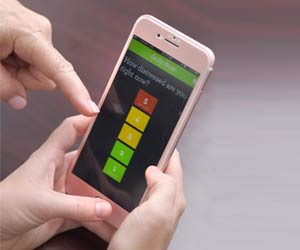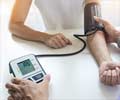Who needs a doctor when you have a phone to record your blood pressure. New blood pressure app will be able to record just with a look.

‘Blood pressure can be measured without the need for special equipment. This app could improve hypertension awareness and control rates among people’





"By leveraging optical and force sensors already in smartphones for taking 'selfies' and employing 'peek and pop,' we've invented a practical tool to keep tabs on blood pressure," he said. "Such ubiquitous blood pressure monitoring may improve hypertension awareness and control rates, and thereby help reduce the incidence of cardiovascular disease and mortality."In a publication in Science Translational Medicine earlier this year, Mukkamala's team had proposed the concept with the invention of a blood pressure app and hardware. With the combination of a smartphone and add-on optical and force sensors, the team produced a device that rivaled arm-cuff readings, the standard in most medical settings.
With advances in smartphones, the add-on optical and force sensors may no longer be needed. Peek and pop, available to users looking to open functions and apps with a simple push of their finger, is now standard on many iPhones and included in some Android models.
If things keep moving along at the current pace, an app could be available in late 2019, Mukkamala added.
"Like our original device, the application still needs to be validated in a standard regulatory test," he said. "But because no additional hardware is needed, we believe that the app could reach society faster."
Advertisement
Anand Chandrasekhar, Keerthana Natarajan, Mohammad Yavarimanesh - all electrical and computer engineering doctoral candidates - contributed to this research.
Advertisement
Source-Eurekalert















